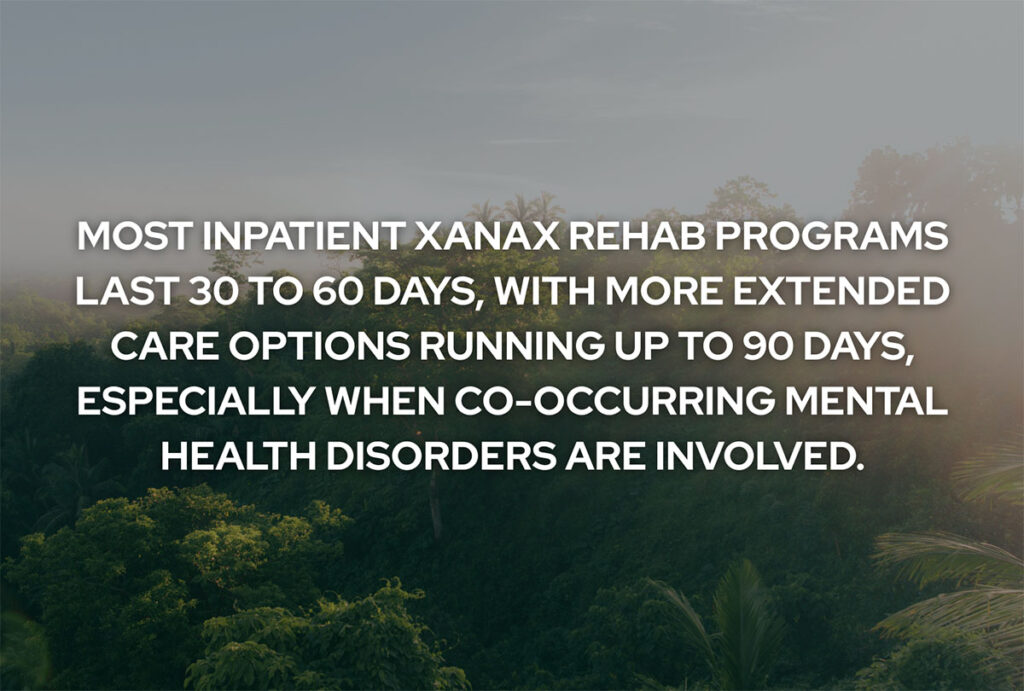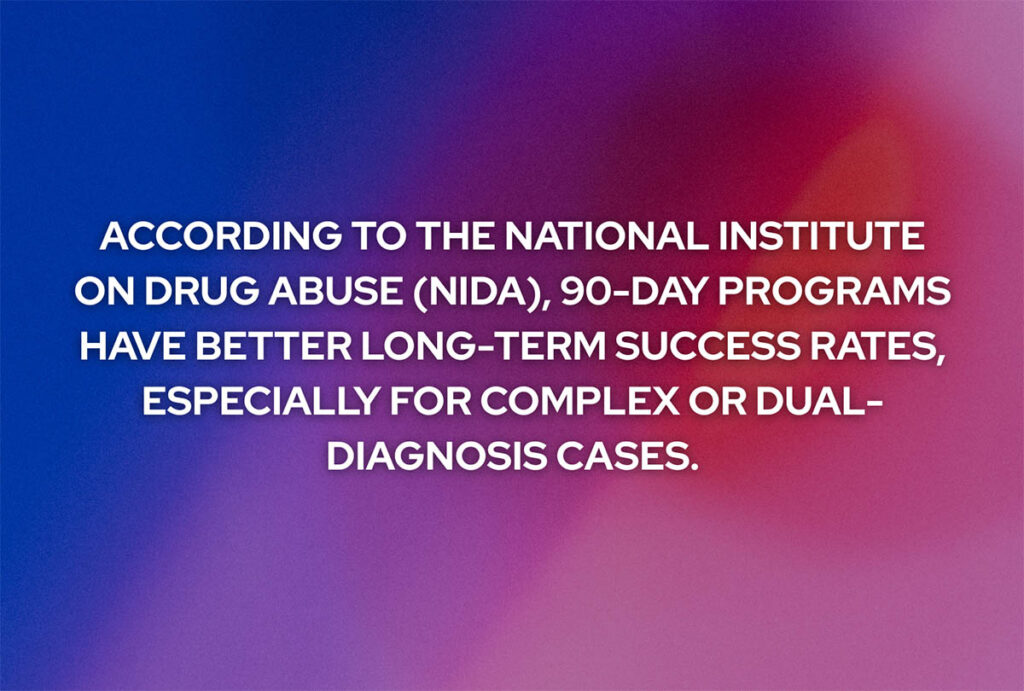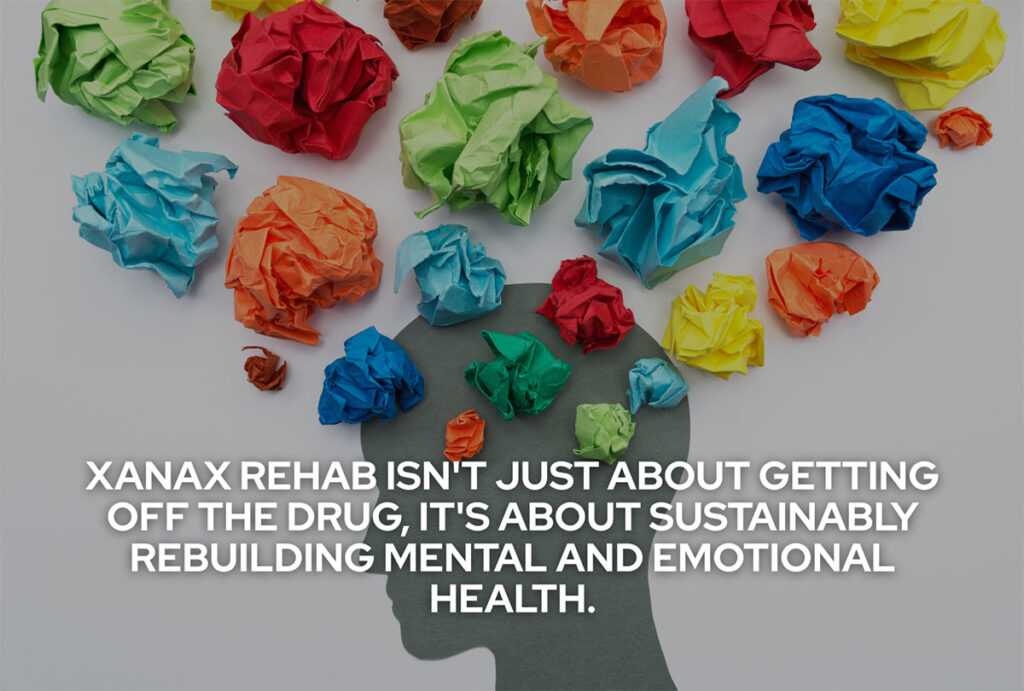Most inpatient Xanax rehab programs last 30 to 60 days, with more extended care options running up to 90 days, especially when co-occurring mental health disorders are involved. Outpatient programs typically last between 8 to 16 weeks, depending on the person’s progress and support needs.

Xanax (alprazolam) is a short-acting benzodiazepine commonly prescribed for anxiety and panic disorders. It also carries a high risk for dependency and withdrawal. Because of how it affects the central nervous system, quitting Xanax too quickly or without proper medical support can lead to serious health risks, including seizures. That’s why rehab duration isn’t one-size-fits-all. It depends on how long the person has used Xanax, how much they’ve taken, and their physical and mental health.
Which Factors Shape Xanax Rehab Length?
Several factors determine how long someone might need to stay in rehab for Xanax:
- Severity of dependence: Long-term or high-dose users often need longer tapering periods; acute withdrawal, can last between 5 and 28 days after stopping, and a more protracted withdrawal phase, can last up to a year or more, in some cases.
- Mental health conditions: Anxiety, PTSD, or depression may extend treatment to address both the addiction and underlying issues.
- Previous attempts to quit: A history of relapse might call for longer, more intensive care.
The Substance Abuse and Mental Health Services Administration (SAMHSA) emphasizes that individuals with co-occurring disorders benefit most from integrated, longer-term treatment plans.
Why Is Tapering Crucial for Xanax Withdrawal?
Long-time users of benzodiazepines like Xanax can become physically dependent on the drug. When these users try to stop cold turkey, they can experience psychosis, anxiety, and even seizures because the body and mind both become dependent on the substance to fuel it. Without it, the person might experience uncomfortable symptoms of withdrawal, like convulsions and high blood pressure, that may be relentless if not treated properly. Withdrawal can even send the individual into fits of paranoia, rage, and depression.
The proper rate of the taper, and the length of the tapering process, is deeply dependent on how long the person has used Xanax and how much damage the drug has caused. Most Xanax detox plans use a tapering strategy to reduce doses gradually. This can take several weeks before formal rehab even begins. Inpatient rehab offers close supervision, especially during tapering. Many programs begin with 5 to 10 days of detox, followed by weeks of structured therapy.

Are 30-Day Programs Enough for Moderate Addiction?
A 30-day program are effective for someone with recent or mild Xanax dependence. It typically includes:
- Supervised tapering
- Medical monitoring
- Daily therapy (group and individual)
- Education on coping strategies and relapse prevention
However, people with a history of anxiety or those who used Xanax long-term may benefit from 60 to 90 days in rehab. Longer stays allow more time to:
- Stabilize mood without Xanax
- Practice new behavioral responses
- Treat underlying mental health symptoms
According to the National Institute on Drug Abuse (NIDA), 90-day programs have better long-term success rates, especially for complex or dual-diagnosis cases.
How Do Outpatient Programs Work?
Outpatient addiction treatment works by providing patients with the appropriate treatment intensity, as well as professional support and accountability that they’ll need. Outpatient rehab typically runs 8 to 16 weeks and works well for individuals who:
- Have already completed detox or inpatient care
- Need to maintain work or family obligations
- Have a safe, stable home environment
There are different levels of intensity of outpatient drug rehab programs. Outpatient addiction treatment settings can also vary. Treatment may consist of group and individual counseling, family therapy, education sessions, and medication monitoring (if tapering continues), as well as other treatment services.
Some outpatient programs can be extended for several months depending on the patient’s response to treatment and risk of relapse.
How Are Co-Occurring Disorders Treated in Xanax Rehab?

Xanax misuse often stems from underlying mental health conditions like anxiety or depression. Addressing these co-occurring disorders through therapy is essential for long-term success. Without addressing the root cause, individuals are more likely to relapse.
Treatment may include:
- Cognitive Behavioral Therapy (CBT) focuses on cognition, or how your thoughts can influence your mood. The ultimate goal of CBT is to address negative patterns of thinking and subsequent behaviors to create a positive change in a person’s life.
- Dialectical Behavior Therapy (DBT) is used to treat people with multiple mental health conditions through emotional regulation, similarly to CBT. It relies on learning skills to validate and accept uncomfortable feelings rather than avoiding or working around them.
- Motivational Interviewing is a short-term counseling technique with the aims to address resistance to change and increase a person’s internal motivation to make desired changes.
- Group Therapy can be persuasive and supportive, fostering healthy attachments as well as teach individuals new social skills.
- Non-addictive anxiety medications; there are many non-habit-forming anxiety medication options, and many of them are effective alternatives to benzodiazepines.
Which Tapering Strategies Reduce Withdrawal Risks?
The first step in tapering is deciding what dose to start with. This requires the supervising physician to take into account the dose the user was taking and for how long; effective tapering plans are customized for each person and typically involve:
- Switching to a longer-acting benzo (like diazepam) will take place to stabilize the patient in withdrawal prior to proceeding with a gradual dose reduction.
- Reducing dosage by 5–10% every 1 to 2 weeks
- Monitoring for withdrawal symptoms and adjusting the pace
- This process can take weeks to months before traditional rehab begins.
Conclusion

Xanax rehab isn’t just about getting off the drug, it’s about rebuilding mental and emotional health in a sustainable way. While some people respond well to 30-day programs, others may need 60 to 90 days of intensive support, and according to SAMHSA; longer treatment engagement increases the odds of long-term success. And for benzodiazepines like Xanax, slow and steady truly wins the race.






